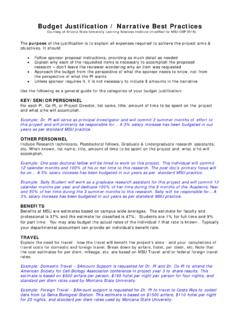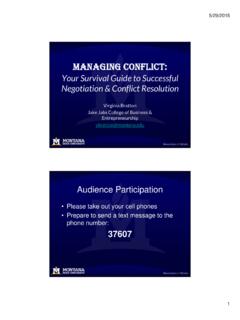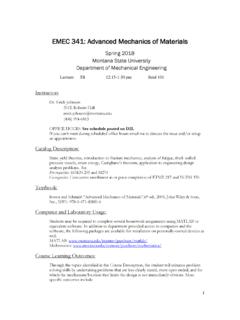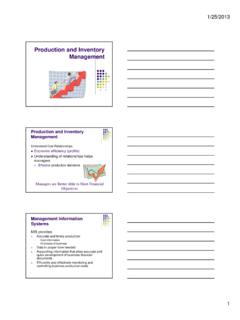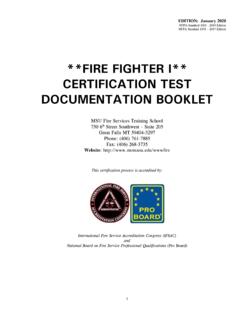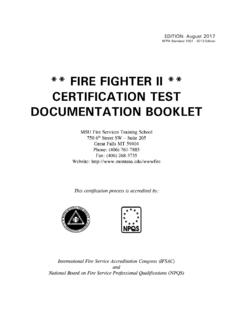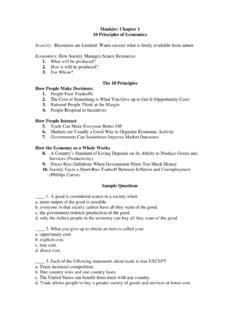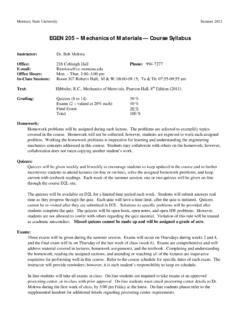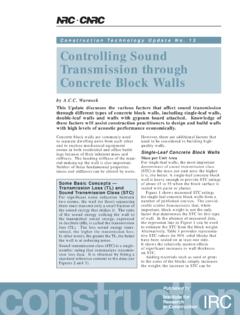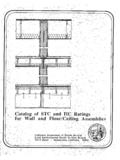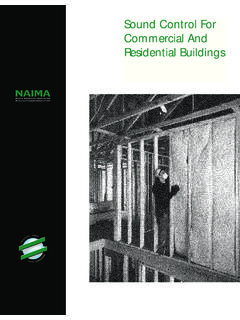Transcription of Determination of Sound Transmission Class (STC)
1 US Gypsum ( ) Determination of Sound Transmission Class (STC) Testing for airborne Sound Transmission is performed under rigidly established procedures set up by the American Society for Testing and Materials (ASTM procedure E90-90). Several independent acoustical laboratories across the nation are qualified to perform the tests. Although all are presumably reliable and follow the ASTM procedure, the results tend to vary slightly. For this reason, test results from more than one laboratory should never be compared on an exact basis. Tests are conducted on a sample assembly, at least m m in size. The assembly is installed between two rooms constructed in such a way that Sound transmitted between the rooms by paths other than through the assembly is insignificant.
2 Background noise in the rooms is monitored to ensure it does not affect test results. The Sound source consists of an electronic device and loudspeaker which produce a continuous random noise covering a minimum frequency range of 125 to 4,000 Hz (Hertz cycles per second). Note for comparison that human speech is approximately 125 to 8,000 Hz. Panel diffusers and/or rotating vanes are set up so noise is diffused and the Sound level is measured at several microphone positions in each room. Readings are taken at sixteen 1/3-octave frequency-band intervals. Average Sound levels in the receiving room are subtracted from the corresponding Sound levels in the source room. The differences ( Sound levels of the actual Transmission ) are recorded as Transmission -loss values (adjustments are made for test room absorption and test assembly size).
3 Sound Test Sample Assembly These Transmission -loss values are then plotted on a frequency band- Sound pressure level graph and the resulting curve is compared to a standard reference contour. The Sound Transmission Class (STC), as defined by the rating procedure set forth in ASTM E413-87, is determined by adjusting the reference contour vertically until the decibel (dB) total of all frequency bands on the test curve that are below the reference contour does not exceed 32, and no point on the test curve is more than 8 dB below the reference contour. Then, with the reference contour adjusted to meet these standards, its Transmission loss at 500 Hz (500 cycles per second) is taken as the STC (dropping dB unit). An alternative procedure, frequently used for the measurement of Sound Transmission loss under field conditions, is given in ASTM Standard Test Method E336-90.
4 This may be used to obtain a Field Sound Transmission Class (FSTC). US Gypsum ( ) Determination of Sound Transmission Class Reproduced above is the graph of an actual Sound Transmission -loss test of a drywall partition, Test No. USG-241-ST. The partition is rated at STC 50 with the reference contour adjusted to meet the standards outlined above. The deficiencies at 2,500 Hz and 3,150 Hz are 8, the allowable maximum. The total of all points below the criterion curve is 29, three points less than the 32 allowed. The reference contour itself is plotted to allow for subjective human response to Sound pressure at the 16 frequency bands measured. Because the human ear is less sensitive to low-frequency Sound pressure than to high frequencies, the reference contour has been adjusted to allow some additional noise at low frequencies.
5 This avoids down-rating test results because of noise levels that are least objectionable to people. The ASTM test procedure explains the use of STC in the following excerpt from E413. These single-number ratings correlate in a general way with subjective impressions of Sound Transmission for speech, radio, television and similar sources of noise in offices and buildings. This classification method is not appropriate for Sound sources with spectra significantly different from those sources listed above. Such sources include machinery, industrial processes, bowling alleys, power transformers, musical instruments, many music systems and transportation noises such as motor vehicles, aircraft and trains. For these sources, accurate assessment of Sound Transmission requires a detailed analysis in frequency bands.
6
